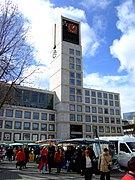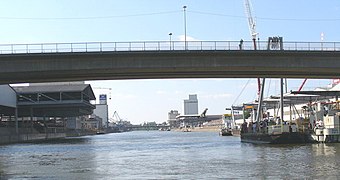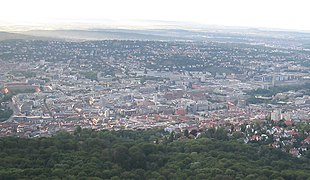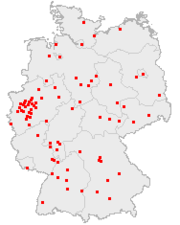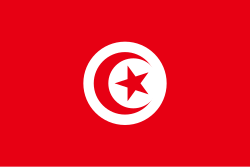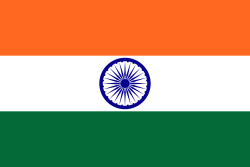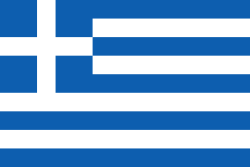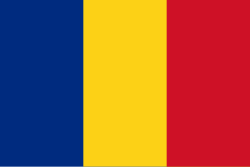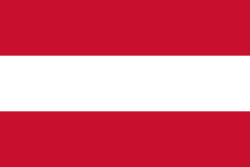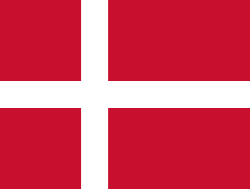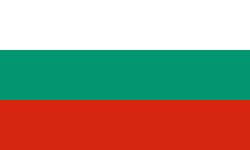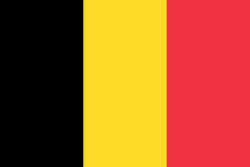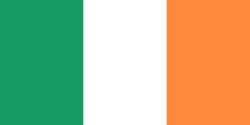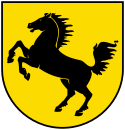Stuttgart
| Stuttgart | |
 | |
| Våben | Beliggenhed |
 | (c) Karte: NordNordWest, Lizenz: Creative Commons by-sa-3.0 de |
| Administration | |
| Land | |
|---|---|
| Delstat | Baden-Württemberg |
| Admin. region | Stuttgart |
| Kreis | Kreisfri by |
| Underinddeling af byer | 23 distrikter |
| Overborgmester | Fritz Kuhn (Bündnis 90/Die Grünen) |
| Statistiske data | |
| Areal | 207,36 km² |
| Højde | 245 m |
| Indbyggere | 634.830 (31/12/2018) |
| - Tæthed | 3.061 Indb./km² |
| Grundlagt | 10. århundrede |
| Andre informationer | |
| Tidszone | CET/CEST (UTC+1/UTC+2) |
| Nummerplade | S |
| Postnr. | 70173–70619 |
| Tlf.-forvalg | 0711 |
| Koordinater | 48°46′43″N 09°10′46″Ø / 48.77861°N 9.17944°Ø |
| Hjemmeside | www.stuttgart.de |
Stuttgart er hovedstaden i delstaten Baden-Württemberg i Tyskland. Byen ligger i centrum af regionen Mittlerer Neckarraum og har cirka 600.000 indbyggere.
Byen har en betydelig industri, bl.a. findes her bilfabrikkerne: Mercedes-Benz (Daimler) samt Porsche, et Teknisk universitet med et verdensberømt botanisk institut og et kunstakademi.
Bygningsværker
- Stiftskirche (sengotisk kirke)
- Altes Schloss (italiensk renæssancestil, opført 1553-78)
- Neues Schloss (opført i det 18. århundrede)
- Schloss Solitude (opført 1764-1775, ligger i Stuttgart-west (Weilimdorf))
- Mercedes-Benz Museum
- Wüttembergs Gravkapel (opført i 11. århundrede) (Her ligger kongeparet Katharina og Wilhelm 1. af Württemberg)
Personer fra Stuttgart
- Georg Wilhelm Friedrich Hegel
- Gottlieb Daimler
- Max Horkheimer
- Berthold Graf Schenk von Stauffenberg
- Hermann Lang
- Richard von Weizsäcker
- Ferdinand Alexander Porsche
- Roland Emmerich
Galleri
- Rådhus
- Delstatsparlement
- Havn
- Stuttgart
Venskabsbyer
Stuttgart har 10 venskabsbyer[1]:
 Brünn – Tjekkiet
Brünn – Tjekkiet Cardiff, Wales – Storbritannien
Cardiff, Wales – Storbritannien Kairo – Egypten
Kairo – Egypten Łódź – Polen
Łódź – Polen Menzel Bourguiba – Tunesien
Menzel Bourguiba – Tunesien Mumbai (tidligere Bombay) – Indien
Mumbai (tidligere Bombay) – Indien Samara – Rusland
Samara – Rusland St. Helens, England – Storbritannien
St. Helens, England – Storbritannien St. Louis, Missouri – USA
St. Louis, Missouri – USA Strasbourg – Frankrig
Strasbourg – Frankrig
Referencer
Eksterne henvisninger
- Turistoplysninger (på tysk, engelsk, m.fl.)
- Stuttgart Stadtinformation – oplysninger om byen (på tysk og engelsk)
- Stuttgart Journal- oplysninger om byen (på tysk)
| Spire Denne artikel om Tysklands geografi er en spire som bør udbygges. Du er velkommen til at hjælpe Wikipedia ved at udvide den. |
Medier brugt på denne side
(c) Karte: NordNordWest, Lizenz: Creative Commons by-sa-3.0 de
Location map of Germany
Positions of cities in Germany
Civil and state flag of the state Rhineland-Palatinate
The Flag of Europe is the flag and emblem of the European Union (EU) and Council of Europe (CoE). It consists of a circle of 12 golden (yellow) stars on a blue background. It was created in 1955 by the CoE and adopted by the EU, then the European Communities, in the 1980s.
The CoE and EU are distinct in membership and nature. The CoE is a 47-member international organisation dealing with human rights and rule of law, while the EU is a quasi-federal union of 27 states focused on economic integration and political cooperation. Today, the flag is mostly associated with the latter.
It was the intention of the CoE that the flag should come to represent Europe as a whole, and since its adoption the membership of the CoE covers nearly the entire continent. This is why the EU adopted the same flag. The flag has been used to represent Europe in sporting events and as a pro-democracy banner outside the Union.Flag of Portugal, created by Columbano Bordalo Pinheiro (1857–1929), officially adopted by Portuguese government in June 30th 1911 (in use since about November 1910). Color shades matching the RGB values officially reccomended here. (PMS values should be used for direct ink or textile; CMYK for 4-color offset printing on paper; this is an image for screen display, RGB should be used.)
Flag of Austria with the red in the Austrian national colours which was official ordered within the Austrian Armed Forces (Bundesheer) in the characteristic “Pantone 032 C” (since May 2018 the Red is ordered in the characteristic “Pantone 186 C”.)
Finlands flag
Flag map of Germany
Forfatter/Opretter: No machine-readable author provided. Enslin assumed (based on copyright claims)., Licens: CC BY-SA 3.0
Stuttgart-Hafen/harbour 18-6-2005
- selbst fotografiert von user:Enslin
Forfatter/Opretter: Joachim Köhler, Licens: CC BY-SA 3.0
Townhall of Stuttgart/Germany

